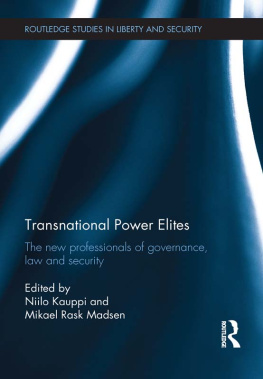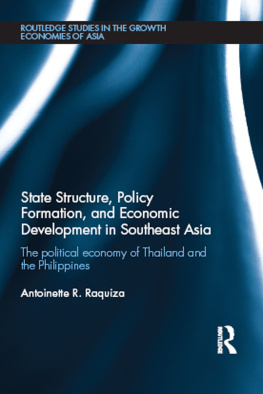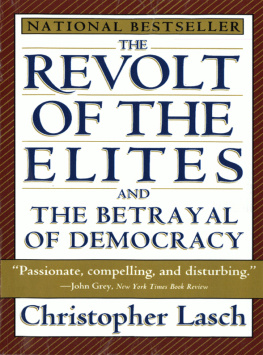Between Fault Lines and Front Lines
Between Fault Lines and Front Lines
Shifting Power in an Unequal World
Katja Hujo and Maggie Carter

Contents
Part I
INEQUALITIES IN CONTEXT
Katja Hujo and Maggie Carter
Jomo Kwame Sundaram and Vladimir Popov
Part II
ENGINES OF INEQUALITY: INSTITUTIONS, POLITICS AND POWER
Julie MacLeavy and David Manley
Megan Tobias Neely
Kate Meagher
Roberto Pires
Fritz Nganje
Part III
ELITE IDEOLOGY AND PERCEPTIONS OF INEQUALITY: IMPLICATIONS FOR REDISTRIBUTION AND SOCIAL COHESION
Tom Lavers
Graziella Moraes Silva, Matias Lpez, Elisa Reis and Chana Teeger
Jeremy Seekings
Part IV
A NEW SOCIAL CONTRACT: ALLIANCES FOR TRANSFORMATIVE CHANGE
Antonio Roman-Alcal
Raquel Rojas Scheffer
Laura Alfers
Vandana Shiva
Figures
Global income inequality, 18202000 |
Theil global coefficients of income inequality, 18201992 |
GDP (current USD) by country income level group, 19672015 |
GDP (current USD) by region, 19672015 |
Mechanisms leading to risks of inequality reproduction in policy implementation processes |
Adapted political settlements framework |
Gini coefficient by year in Brazil and South Africa (after transfers) |
Brazilian and South African elites views on consequences of poverty by sector |
Two most important goals of the country for elites in Brazil and South Africa |
Elites views on the two most important initiatives for reducing inequality, by country and sector |
Logistic models for the probability of supporting policies |
Tables
Historical Gini coefficients in some Western locations (%) |
List of founder interviewees |
Variations in the set of cases |
UCLGs BrazilMozambique city-to-city partnerships to democratize the city |
Response rate by country and sector |
Background characteristics of interviewees by country and sector |
Economic inequality has been high at previous points in modern human history but never before has this inequality constrained the well-being and opportunities of so many billions of people. Never before has it threatened the very existence of the planet on which we live.
Even as governments and aid agencies named poverty reduction as the primary development objective for the new millennium, we knew that higher rates of inequality would slow the rate at which economic growth could reduce poverty. The main conclusion drawn at that time by policy makers was not that inequalities in society should be reduced, but rather that countries needed to deliver more economic growth. A focus on reducing inequalities in and of themselves was seen as contrary to the natural order and working against free market forces. Globalization was expected to flatten disparities, and inequalities would become extinct in a connected world of more opportunities.
Some countries did indeed grow faster than others, at least until the global economic and financial crisis checked that pathway. China in particular did the heavy lifting that allowed the world to claim that extreme monetary poverty had been halved. But inequality stunted the progress that could have been made and now it acts as a brake on progress across the full suite of Sustainable Development Goals.
Like poverty, which we understand as multidimensional, there are many inequalities that exist and combine to limit capabilities and opportunities. Vertical inequalities describe those relating to income and wealth, while horizontal inequalities serve as the basis for discrimination against and exclusion of certain groups or communities. Often they reinforce each other, with marginalized groups around the world being poorer and unable to access jobs, services and resources.
Inequalities are a problem now not only because fewer people are connected to growth and economic security, but because the world is steadily being oriented to those who are already well-off. The rules of the game have been subtly rewritten to protect the wealth of the rich and in doing so limit the opportunities of everyone else. Inequalities have become self-sustaining while social mobility has been choked. This slow creep is expressed through the policies and institutions that leaders and officials put in place.
The policies and institutions that are keeping the rich rich are the same ones that exert an inexorable gravitational pull toward unsustainable development and crises, felt most acutely through the destruction of the climate, ecosystems and biodiversity. Economic power has traditionally been synonymous with political powerindeed, by 2020 half the members of the US Congress were millionaires. The powerful will tend to look after themselves first.
To understand the impact that inequalities have on our prospects for human progress and planetary survival, and their root causes, we need to look at not just the very poor but also the very rich. That is where this book comes in, focusing squarely on how economic and political elites keep the balance of the world tilted to their benefit. It uncovers how they lobby for favorable tax treatment or contracts and ensure that their wealth can be passed down the family tree like an inherited title.
Even 20 years ago, the various injustices that inequalities breed could remain largely hidden. Now, an internet connection in the poorest place on the planet can expose the consumerist excesses in the richest. And that, in turn, is energizing a new movement and quest for a fairer and more sustainable world. Through research and advocacy, UNRISD supports this movement. This book showcases many examples of how less powerful people organize, build alliances and successfully claim their rights. UNRISD explores inequalities through all our research programs, and our policy recommendations point to the need to develop new contracts that combine ecological and social rights and responsibilitiesor eco-social contractsthat by necessity emphasize solidarity and sustainability in the face of exclusion and injustice.
Many argue, correctly, that some inequalities are innate and inevitable. They can be created by different talents and even luck. But an evolved humanity should seek to level up and maximize opportunities for all, guaranteeing that everyone can live a dignified life and enjoy fundamental human rights. That can only be done if we strip back the entrenched and ossified inequalities that characterize our world today and which have been slowly put in place by privileged elites.
Paul Ladd, Director, UNRISD
Geneva, August 2021
Inequality as a social, political and development issue has risen toward the top of public agendas, with its damaging impacts on social, environmental and economic sustainability and its links to poverty, insecurity, crime and xenophobia now widely demonstrated and acknowledged. This was crystalized with the inclusion of a stand-alone goal on inequalities in the 2030 Agenda for Sustainable Development in 2015. However, despite this prominence in both national and global development agendas, the conversation largely revolves around the bottom of the inequality pyramidthe poorest of the poorwith little attention paid to the drivers of inequality and structures that reproduce and reinforce it.
Next page







